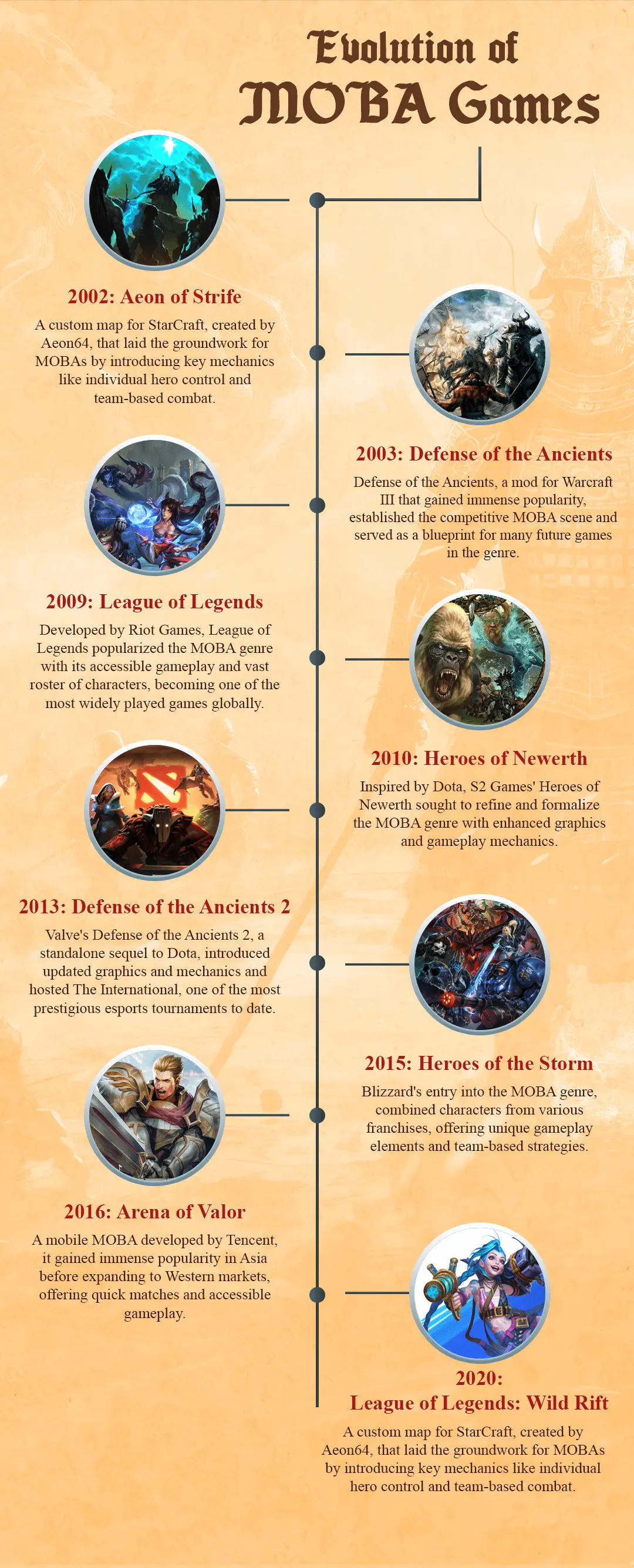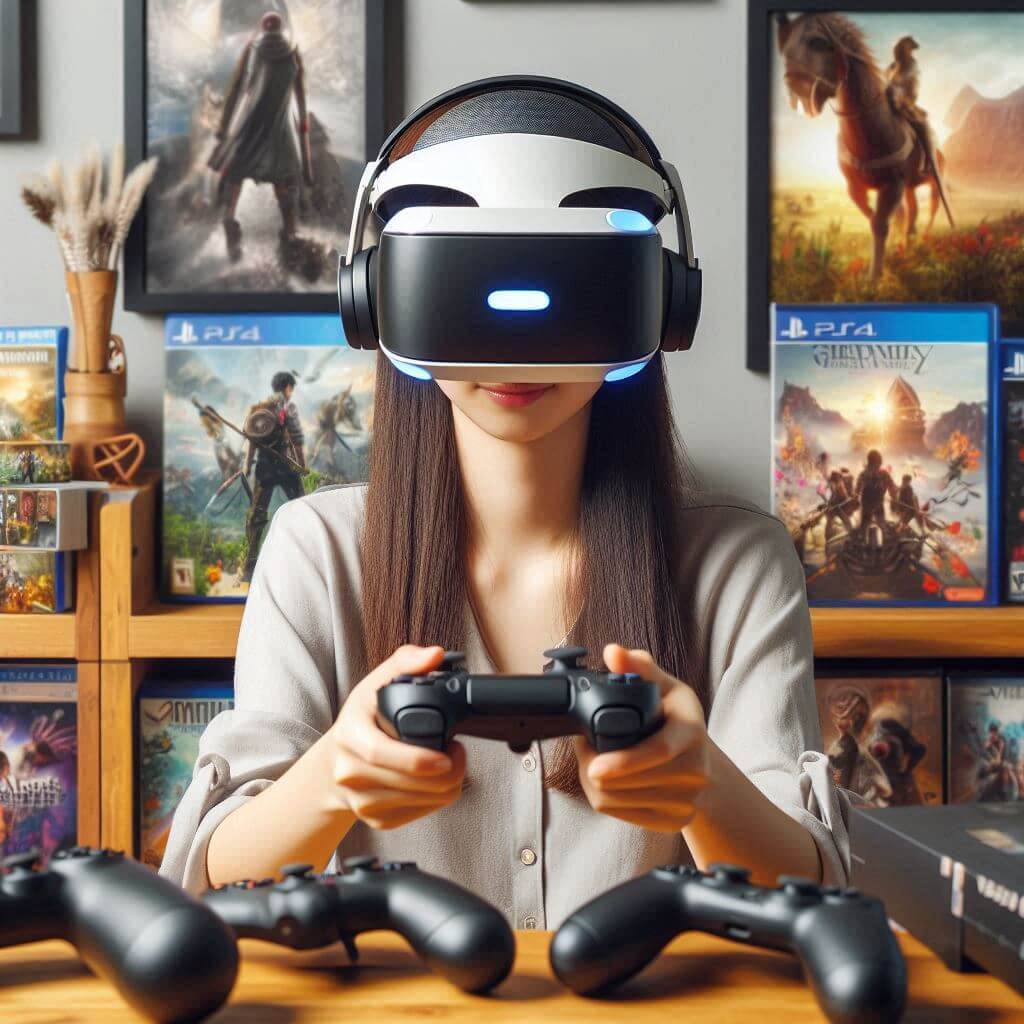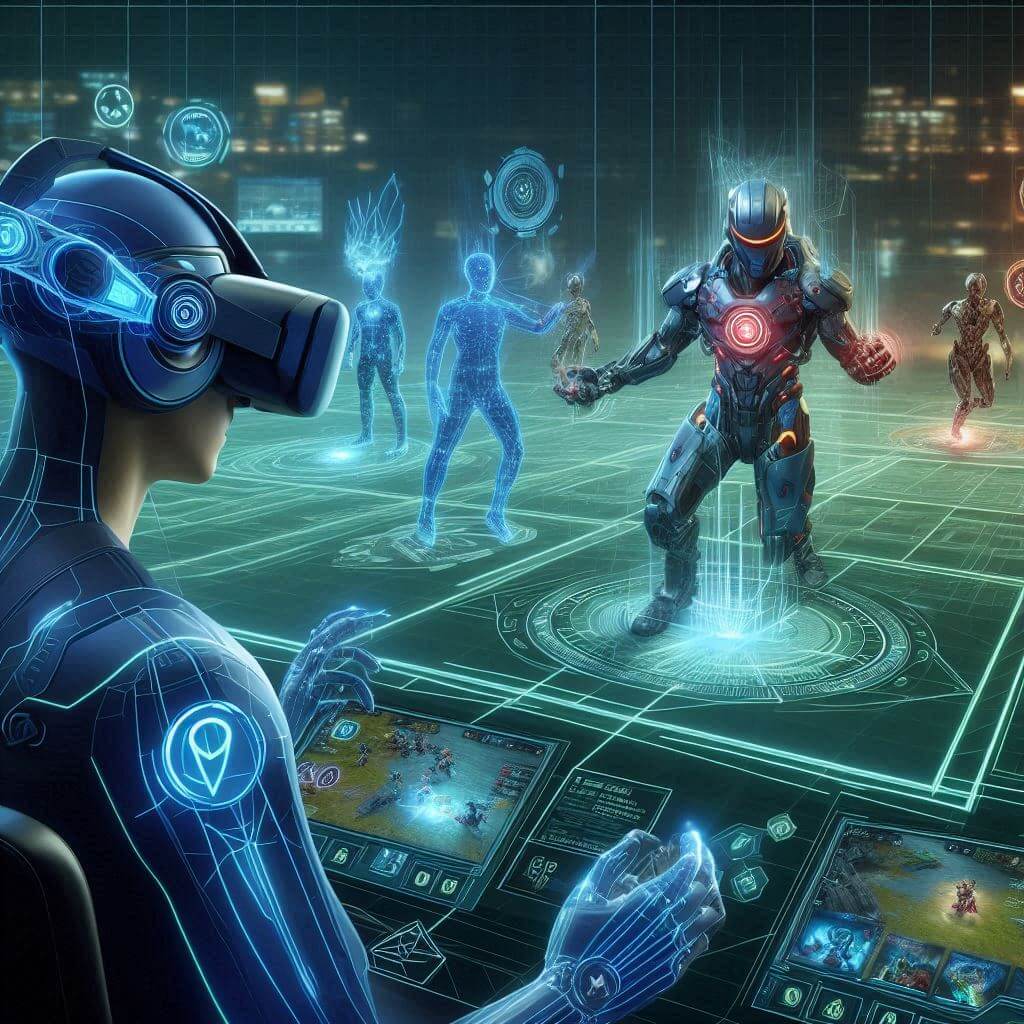Multiplayer Online Battle Arenas (MOBA) have become a major force in gaming, keeping players hooked with their strategic gameplay and competitive action for over a decade. The deep strategy, team-based gameplay, and fast-paced action have drawn in millions of players worldwide. Integrating Virtual Reality in MOBA gaming could be the next big paradigm shift. Could these two technologies be the next frontier for battle arenas, offering players an immersive experience we haven’t seen before? This blog will explore the evolution of MOBA games, the potential for Virtual Reality integration, and what this means for the future of online MOBA games.
The MOBA genre can be traced to custom maps and mods created for real-time strategy (RTS) games. Remember the “Aeon of Strife” map for StarCraft? That is where it all began. It introduced us to the core elements of MOBA: two teams, opposing bases, and a central objective.
The real game-changer for the MOBA genre was “Defense of the Ancients” (DotA) in 2003. Initially a custom map for Warcraft III, DotA quickly gained a massive following and became a standalone game. DotA introduced the features you now love in MOBA: innovative mechanics, item shops, hero abilities, and experience levels.
Then came the major players: League of Legends and Dota 2. These games took MOBA mainstream. They introduced free-to-play models and polishing graphics, gaining popularity and becoming synonymous with the MOBA genre.

Today, the best MOBA Games are known for their competitive nature, team-based gameplay, strategic depth, diverse character rosters, and esports potential. As the genre evolves, developers constantly seek new ways to enhance the player experience and keep the gameplay fresh and exciting.
Virtual Reality (VR) technology has made significant strides in recent years with devices like the Oculus Quest 2, HTC Vive, and PlayStation VR, offering immersive experiences that blur the lines between the digital and physical worlds. VR games have expanded beyond simple demonstrations of the technology, offering full-fledged gaming experiences across various genres.

The potential for Virtual Reality to revolutionize gaming is immense, with its ability to provide unparalleled immersion, offer intuitive-natural interactions, create new gameplay mechanics, and enhance social experiences in multiplayer games. As VR technology continues to improve and become more accessible, its integration into various gaming genres seems inevitable.
Integrating Virtual Reality into MOBA games represents a significant leap forward for the genre. VR opens up possibilities for unique abilities and interactions that aren’t possible in traditional MOBA.
Virtual Reality offers players a new level of immersion. Imagine you are not controlling your favorite character- you are the character. You can see the battlefield from a first-person perspective. With this level of immersion, you unlock new experiences, such as navigating the battlefield in real-time and interacting with the environment in a three-dimensional space, making you feel more connected to the game and its characters. Your strategies and teamwork would take a whole new dimension.

In addition, the physical engagement aspect of Virtual Reality Games promotes movement, encouraging healthier gaming habits compared to the traditionally sedentary nature of MOBA games. You can perform actions such as dodging attacks with your body or casting spells with hand gestures, making the experience more dynamic and physically stimulating.
Despite the promising benefits, integrating Virtual Reality into MOBA comes with its own set of challenges.
The future of MOBA games in Virtual Reality is undoubtedly exciting. As technology advances, the barriers to VR adoption in MOBA games will continue to shrink. The future of MOBA Games is AI-driven features, dynamic environments, and personalized gameplay experiences in the coming years. Imagine a future where you can engage in fully immersive online MOBA games, controlling characters through physical gestures and adapting to real-time changes in the environment.
Esports will also grow with VR MOBAs, offering unique experiences that blend the physicality of traditional sports with the strategic depth of MOBA games. This new hybrid of physical and digital engagement could redefine competitive gaming, attracting new players and audiences.
At Juego Studios, we specialize in developing cutting-edge gaming experiences, including Virtual Reality games. With our extensive experience in both VR development and competitive gaming, we’re uniquely positioned to create the next generation of battle arena games.
Our expertise in creating immersive, interactive environments makes us the ideal partner for those looking to innovate in the MOBA space. Whether you are considering the development of a VR MOBA or enhancing your current game with dynamic AI systems, our team is ready to help you bring your vision to life. Let’s collaborate and create the next generation of battle MOBA games that will captivate players worldwide.
Integrating Virtual Reality into MOBA games represents the next frontier for competitive gaming. From immersive experiences to enhanced physical engagement, Virtual Reality has the potential to reshape how players interact with battle arenas. While there are challenges to overcome, the future is bright for online MOBA games as new technologies unlock new possibilities for gameplay, community engagement, and esports. Whether you are a player or developer, the coming wave of Virtual Reality innovations promises to deliver an unparalleled gaming experience.
A MOBA (Multiplayer Online Battle Arena) game involves team-based strategic gameplay where players control individual characters with special abilities. The goal is to destroy the opposing team’s base while defending your own.
Virtual Reality offers an immersive first-person perspective in MOBA games, allowing players to navigate the battlefield physically. This enhances strategy and engagement, making the game feel more dynamic.
Challenges include motion sickness, player fatigue, and high development costs. Additionally, the smaller player base for VR compared to traditional platforms can impact early adoption.
While Virtual Reality holds significant potential for MOBA games, it may take time for them to become mainstream due to the cost and accessibility of VR technology. However, as technology advances, it could become a more common feature.
Key challenges include designing intuitive VR controls, balancing gameplay between VR and non-VR players, and creating a comfortable experience for extended play sessions.
While full VR MOBAs are still developing, games like “Warfare Realm VR” and “Cradle of Sins” pave the way for this exciting genre fusion.